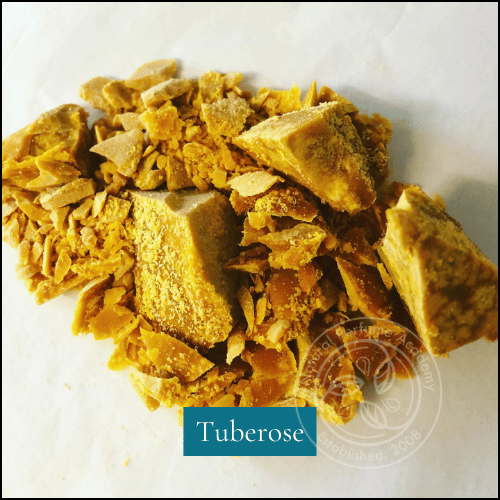Styrax gum resin aka benzoinStyrax benzoin, Styrax tonkinensis, Styrax paralleloneurum Common Names: Benzoin, Gum Benjamin, Styrax Resin Description: Aroma Profile: Uses in Perfumery: Regions: Extraction Method: Goes Well With: Unique Characteristics: Descriptive Language CategoriesNote Family: Balsamic, Sweet, Resinous, Amber Texture: Syrupy, resinous, velvety Emotion: Comforting, grounding, nostalgic, devotional Analogy: Warm church pews in winter, spiced caramel, aged parchment with vanilla ink Cautions: |
Sweetcharacterized by taste utilizing essences such as vanilla, honey and warm balsamic notes |
Tagetes (Tagetes Oil / Marigold)Tagetes patula, Tagetes minuta, Tagetes erecta Description: Aroma Profile: Uses in Perfumery: Regions: Extraction Method: Goes Well With: Unique Characteristics: Descriptive Language CategoriesNote Family: Green, Herbal, Fruity, Balsamic Texture: Sharp, juicy-green, sticky-herbaceous Emotion: Wild, alerting, rustic, nostalgic Analogy: Overgrown herb garden in late summer, wildflowers crushed underfoot, bitter fruit peel in sunlight Cautions: |
Tea AbsolutesTea absolutes Camellia sinensis , thea chinensis , thea sinensis |
Tenacitystrength of a scent or note characterized by the length of time it lasts on the skin |
TinctureA tincture is an alcoholic extract of natural raw materials. Common tinctures include: Tincture of vanilla, Tincture of Ambrette seed, Tincture of Orris, Tincture of benzoin, and Tincture of Labdanum. |
TreemossesTreemosses usnea / pseudoevernia furfuracea See Oakmoss |
Tuberose
Title: TuberoseTuberose (Polianthes tuberosa) is a highly fragrant perennial plant native to Mexico, and it has been cherished for centuries for its captivating, creamy white blooms that emit an intense, rich floral aroma. In the realm of natural perfumery, tuberose is considered one of the most luxurious and sensual floral notes, often used in high-end and artisanal fragrances. Characteristics and ExtractionThe scent of tuberose is complex and multi-faceted, featuring notes of creaminess, sweetness, and an almost narcotic intensity that is both heady and seductive. This makes it a powerful addition to perfumes, where it often serves as the heart or middle note, providing depth and opulence to a fragrance composition. Tuberose is typically extracted in two primary forms used in natural perfumery:
Perfumery UsesTuberose is a versatile note in perfumery, complementing and enhancing a wide range of other fragrance components. It pairs beautifully with:
Example Uses in Fragrance Types:
Additional Notes
References
Tuberose remains a beloved and pivotal element in natural perfumery, admired for its ability to convey an air of luxury and mystique. Its unique aroma continues to inspire perfumers and captivate fragrance enthusiasts around the world. |
Ultrasonic ExtractsTo make an ultrasonic extract the raw material which has been ground to a powder is suspended in a solvent. High frequency vibration is applied and in a short amount of time the extraction is complete. |
Verbena AbsoluteLippia citriodora(syn. Aloysia triphylla, Aloysia citriodora) Description: Aroma Profile: Uses in Perfumery: Regions: Extraction Method: Goes Well With: Unique Characteristics: Descriptive Language CategoriesNote Family: Citrus, Green, Herbal, Floral Texture: Silky, light, bright, leafy Emotion: Uplifting, cheerful, refreshing, clear-headed Analogy: Morning lemon tea, sunlit garden herbs, lemon zest on a cool breeze Cautions: |
